
The Dornier Do 12 Libelle III was the third of a line of small German flying boats of the 1930s. It started with the Dornier A Libelle I and the Dornier A Libelle II, though the Do 12 was not a continuation, but an entirely new aircraft.

The Bloch MB.170 and its derivatives were French reconnaissance bombers designed and built shortly before the Second World War. They were the best aircraft of this type available to the Armée de l'Air at the outbreak of the war, with speed, altitude and manoeuvrability that allowed them to evade interception by the German fighters. Although the aircraft could have been in service by 1937, debate over what role to give the aircraft delayed deliveries until 1940.
The Arpin A-1 was a two-seat low-wing monoplane which was powered by a single radial engine in pusher configuration, mounted behind the cabin between twin booms that carried the tail. An unconventional fixed tricycle undercarriage was fitted. Only one was built.

The Bloch MB.220 was a French twin-engine passenger transport airplane built by Société des Avions Marcel Bloch during the 1930s.

Potez 62 was a French twin-engine civil airliner, designed by Henry Potez in 1934.

The Potez 32 and its military version the Potez 33 was a single-engine French monoplane transport built by Potez and based on the Potez 29 biplane.

The Sud-Est SE.200 Amphitrite was a flying boat airliner built in France in the late 1930s, originally developed as the Lioré et Olivier LeO H-49 before the nationalisation of the French aircraft industry. It was a large, six-engine design with a high-set cantilever monoplane wing, and twin tails. It was developed in response to a French air ministry specification of 1936 for a transatlantic airliner for Air France with a range of 6,000 km (3,700 mi) and capacity for 20 passengers and 500 kg of cargo. Designs were submitted by Latécoère, Lioré et Olivier and by Potez-CAMS as the Laté 631, LeO H.49 and the Potez-CAMS 161 respectively, and examples of all designs were approved for construction. A large mock-up, resting on simulated water, was displayed at the 1938 Salon de l'Aéronautique.
The IAR 15 was a low-wing monoplane fighter designed in Romania in 1933.
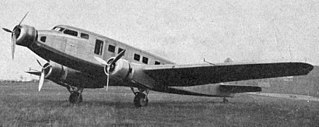
The Bloch MB.300 "Pacifique" was a French all-metal three-engine monoplane that was developed to enter service as an Air France airliner. Though a single prototype was produced by Société des Avions Marcel Bloch in 1935, it was eventually rejected by Air France circa 1938.

The Renard R.35 was a prototype pressurised airliner of the 1930s built by the Belgian aircraft manufacturer Constructions Aéronautiques G. Renard. A three-engined low-winged monoplane with retractable undercarriage, the R.35 was destroyed in a crash on its first flight.
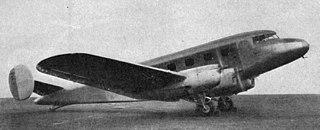
The Potez 661 was a four-engined metal low-wing monoplane airliner developed in France just before World War II. The single example flew with Air Afrique on French colonial routes.

The Bréguet 890 Mercure was a late 1940s French cargo and passenger transport aircraft designed by Bréguet Aviation. Three variants were produced including a military variant called the Mars but none entered production.
The Farman F.420 was a twin engine monoplane, built in France in the mid-1930s to compete in a government contest for an aircraft capable of fulfilling bomber, fighter and reconnaissance roles. Two prototypes were constructed but no production followed.
The Breguet 160 was a three engine, multi-role monoplane designed in the early 1930s to meet a French government call for aircraft suited to policing and medical duties in its African colonies. Two prototypes were built and tested, but no further orders were placed.

The SNCAC NC-600 was a prototype French twin-engined long-range fighter aircraft, developed by SNCAC from the earlier Hanriot H.220 fighter. The type never entered service, with development being ended by the French surrender in June 1940.
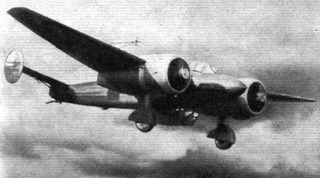
The SNCAC NC.510 was a twin-engine French reconnaissance, army co-operation or advanced training aircraft, built in the late 1930s. Three were built and refined but production orders were not forthcoming.
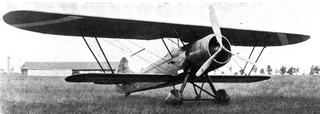
The Potez 506 was a version of the Potez 501 French single engine observation aircraft, specially modified to capture the World absolute altitude record. In September 1933 it set a new record at 13,661 m (44,820 ft).

The Potez 40 was a French three-engine, braced high-wing monoplane designed and built in response to a French government programme for colonial transport and policing aircraft duties.
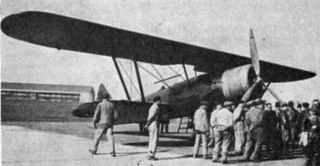
The Potez 50 or Potez 50 A2 was a French two seat military multi-rôle aircraft, first flown in 1931. It did not go into service but seven variants using five different engines were produced, one of them setting several speed with useful load records and another, the Potez 506, setting three altitude world records.
The Lioré et Olivier LeO H-46 was a bomber seaplane built in France in 1936.















